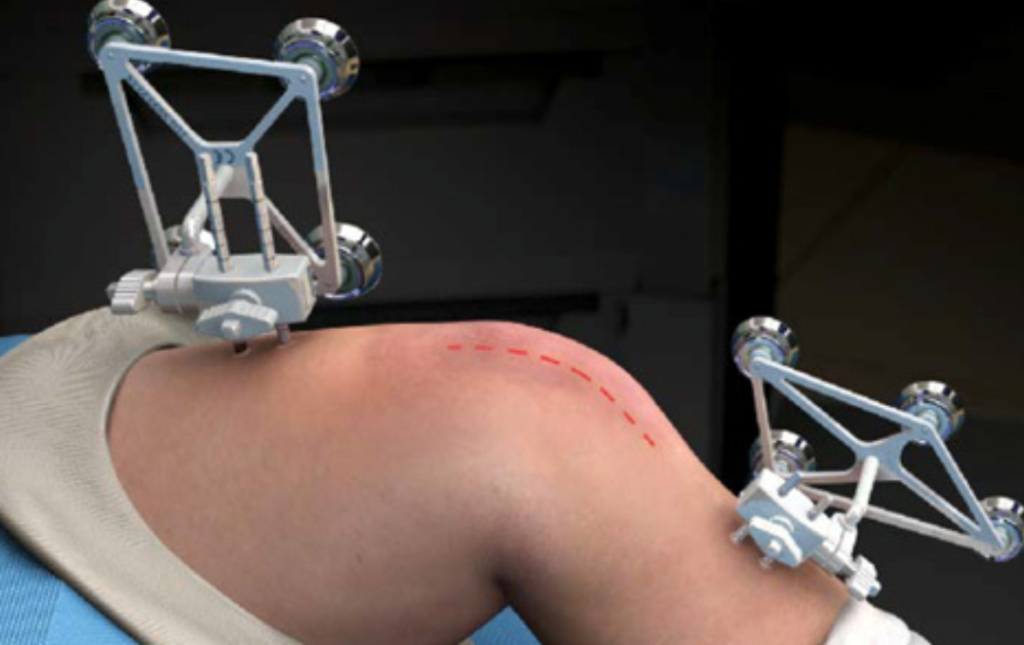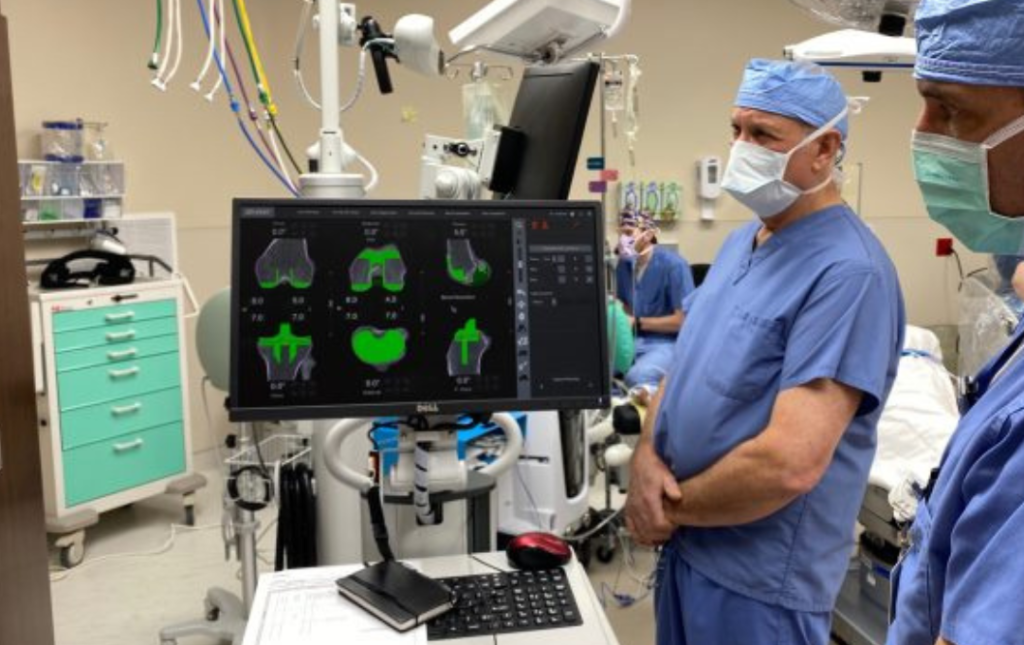Advancements in medical technology continue to revolutionize the field of orthopedics, particularly in knee replacement surgeries. Robotic-assisted knee replacement has emerged as a cutting-edge technique, combining the precision of robotics with the expertise of orthopedic surgeons. In this blog, we explore the future of orthopedics and the transformative impact of robotic knee replacement surgery on patients’ lives.
How the Knee Replacement Surgery Will Evolve?
Knee replacement surgery, also known as knee arthroplasty, has been a transformative procedure for individuals suffering from debilitating knee pain and limited mobility. Traditionally, the surgery involved manually cutting and shaping the bones to accommodate the prosthetic components. Although effective, this approach relied heavily on the surgeon’s skill and experience, leading to slight variations in outcomes.
What is Robotic Knee Replacement Surgery?
Robotic systems, such as the MAKO system, use advanced 3D imaging and real-time feedback to assist surgeons in planning and executing surgery with unmatched precision. The surgeon remains in full control throughout the procedure, with the robotic system providing valuable insights and guidance. Furthermore, the advent of robotic-assisted knee replacement surgery has brought a new level of precision and accuracy to the procedure.
The future of orthopedics holds a tremendous fascination with the evolution of robotic surgery for knee replacement. Here are some remarkable transformations awaiting the area.
1. Personalized Pre-operative Planning
One of the key benefits of robotic-assisted knee replacement is personalized pre-operative planning. Before entering the operating room, the surgeon uses the robotic system to create a virtual 3D model of the patient’s knee joint. This allows the surgeon to assess the patient’s unique anatomy, determine the optimal implant size and alignment, and develop a customized surgical plan tailored to the individual’s needs.
2. Enhanced Precision during Surgery
During the surgery, the robotic system acts as an extension of the surgeon’s expertise, providing real-time feedback on the knee’s alignment and soft tissue balance. This level of accuracy ensures precise bone preparation and implant positioning, leading to better joint stability and improved function post-surgery. The result is a more natural-feeling knee that mimics the patient’s original joint movement.
3. Minimally Invasive Approach
Robotic-assisted knee replacement surgeries are often performed using a minimally invasive approach. Smaller incisions mean less tissue disruption, reduced blood loss, and quicker recovery times for patients. The combination of robotic precision and a minimally invasive approach enhances patient outcomes, allowing them to resume their daily activities faster.
4. Faster Recovery and Rehabilitation
One of the most significant advantages of robotic-assisted knee replacement surgery is the potential for faster recovery and rehabilitation. The accurate placement of the implant, along with the preservation of healthy bone and soft tissue, leads to less post-operative pain and a smoother recovery process. Patients often experience less reliance on pain medication and can begin physical therapy sooner, facilitating a speedier return to normal activities.
5. Long-term Implant Survival
With the increased precision and personalized fit of robotic-assisted knee replacement surgery, there is a potential for improved long-term implant survival. Proper alignment and balanced soft tissue tension can help reduce wear and tear on the implant, potentially extending its lifespan. This can be particularly advantageous for younger patients who may expect their knee replacement to last several decades.

6. Expanding Access to Advanced Care
As robotic-assisted knee replacement surgeries become more widespread, they have the potential to expand access to advanced orthopedic care. By standardizing procedures and improving outcomes, this technology may become more accessible to a broader range of patients, regardless of their geographical location or healthcare facilities.
7. Continuous Technological Advancements
The future of knee replacement robotic surgery holds even more promise. As technology continues to advance, robotic systems are likely to become even more sophisticated, further improving surgical outcomes. Additionally, ongoing research and data collection will refine the understanding of patient outcomes and contribute to the development of best practices in robotic-assisted knee replacement surgeries.
8. The Surgeon’s Expertise Remains Paramount
While robotic technology enhances precision and efficiency, it is essential to emphasize that the surgeon’s expertise and skill remain critical in ensuring successful outcomes. The robotic system is a powerful tool, but the surgeon’s experience and decision-making ability are still fundamental in tailoring the procedure to each patient’s unique needs and challenges.
9. Improved Post-operative Rehabilitation
Robotic-assisted knee replacement surgery enhances post-operative rehabilitation programs. The precise positioning of the implant and balanced soft tissue tension contribute to a smoother recovery process, enabling patients to start rehabilitation exercises sooner. Physical therapists can design tailored rehabilitation plans based on the accurate data provided by the robotic system, optimizing the recovery journey for each patient.
10. Enhanced Patient Satisfaction
The combination of robotic precision and personalized care leads to higher patient satisfaction rates. Patients who undergo robotic total knee replacement surgeries often report improved outcomes, reduced pain, and quicker recovery times, resulting in a higher quality of life. Enhanced patient satisfaction fosters a positive healthcare experience and bolsters the confidence of patients in the field of orthopedics.
11. Reduction in Complications
Robotic-assisted knee replacement surgeries contribute to a reduction in surgical complications. The precise implant placement and minimized soft tissue damage lower the risk of postoperative complications, such as infection, instability, and implant loosening. The advanced technology aids in minimizing human errors, ensuring a more consistent and reliable surgical outcome.
12. Evolving Applications in Orthopedics
As robotic technology continues to advance, its applications in orthopedics are expanding beyond knee replacement surgeries. Robotic systems are being explored for other joint replacement surgeries, including hip and shoulder replacements. Additionally, their potential is being investigated in complex orthopedic procedures like spine surgery, allowing for a more accurate and less invasive approach.
Conclusion
Robotic-assisted knee replacement surgery marks a significant leap forward in the field of orthopedics, offering patients the prospect of enhanced precision, faster recovery, and improved long-term outcomes. As this technology continues to evolve, it holds the potential to revolutionize knee replacement surgeries, empowering patients with better joint function and a higher quality of life. As we embrace the future of orthopedics, robotic knee replacement surgeries pave the way for a new era in the treatment of knee-related conditions, transforming the lives of patients around the world.
We are India’s first comprehensive continuum care provider. We provide multidisciplinary out of hospital care to acute and post-acute and chronically ill patients at our critical care facilities and your home.


